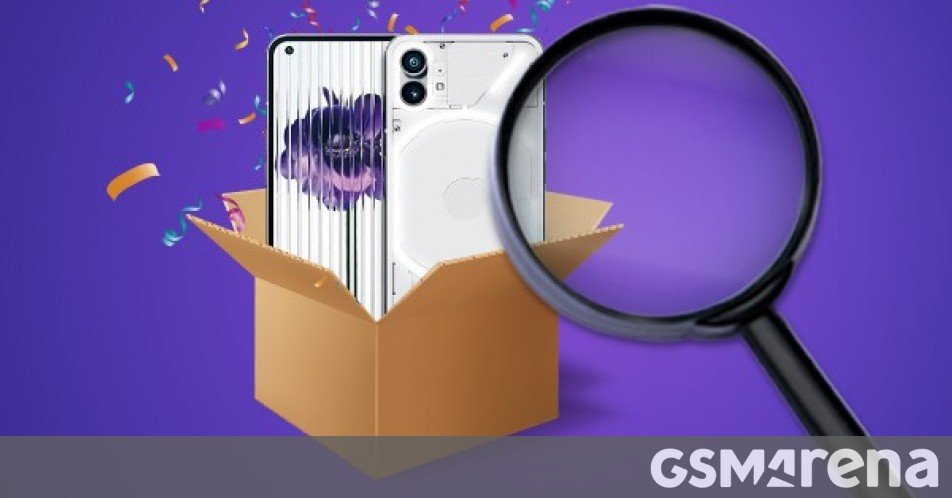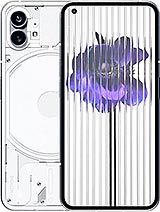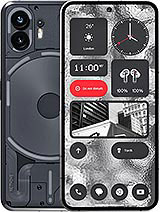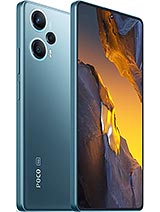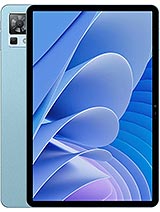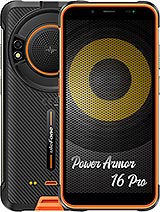Nothing is yet to branch out into multiple phone lines – right now the Nothing Phone (2) is its flagship, the older Phone (1) is sticking around as the mid-ranger. You can pick it up for €320 for an 8/128GB model, though for a small premium you can get the 12/256GB option, which is probably the better pick. The extra RAM will help keep the phone snappy going forward and there’s no way to expand the storage later on.
Costing around €200 more than the 12/256GB model, the Nothing Phone (2) with the same memory configuration offers a faster Snapdragon 8+ Gen 1 (vs. 778G+), better display (6.7” LTPO OLED vs. 6.55” OLED, both FHD+ 120Hz) and a slightly larger battery that helps offset the more power-hungry chip and display (with 45W wired and 15W wireless vs. 33W/15W for the original). The rear cameras are basically the same, the selfie camera doubled its resolution to 32MP.
The Poco F5 is equipped with the Snapdragon 7+ Gen 2, which is something of a “lite” version of the 8+ Gen 1. Here it is paired with a 6.67” 120Hz OLED display, not LTPO but with 12-bit colors and Dolby Vision. It has an even larger 5,000mAh battery and beats both Nothings in terms of battery life and is fast to charge too at 67W (but it lacks wireless charging). The 64+8+2MP rear camera is no match for the dual 50MP cameras of the Nothing duo.
Not everyone is a fan of MIUI, so you may prefer the Pixel skin instead. The Pixel 8 is smaller than the phones above with a 6.2” OLED display (FHD+ 120Hz HDR10+). It is powered by the Tensor G3 chipset and a 4,575mAh battery with 27W wired and 18W wireless charging support. Speaking of support, Google intends to keep these going for 7 years after launch with software updates and spare parts.
However, if the price is too steep, the Pixel 7a is also an option. It is on the small side too with a 6.1” display (90Hz OLED FHD+) and uses the older Tensor G2, plus the 4,385mAh battery charges slower (18W wired, 7.5W wireless). Also, support for this one will be shorter – 3 OS updates and 5 years of security patches after launch. But who is actually going to keep the same phone for 7 years?
Next up, a gaming tablet dubbed the Doogee T30 Pro. It’s powered by the Helio G99, so don’t expect to be running AAA titles on high. Still, it has an 11” IPS LCD with 60Hz refresh rate (the chipset isn’t up to HRR gaming), which pretty sharp with 2,560 x 1,600px resolution (16:10). It has an 8,580mAh battery built in and quad speakers so it can be used to binge watch streaming shows too (there is a microSD slot as well for local content).
Finally, the Ulefone Power Armor 16 Pro is made to be a work phone. It’s tough, rated for falls on concrete from 1.5m heights and IP69K for dust and water resistance (the K means it can withstand hot water jets, so it should be easy to keep clean). Look at the back – that’s not decorative, that is actually a really powerful loudspeaker. There is also a built-in flashlight with a dedicated button. The accessory port lets you connect an endoscope or a microscope, which might be useful in your line of work. Also, there is a massive 9,600mAh battery built in so you can even use this as a power bank (with 5W output).
We may get a commission from qualifying sales.

